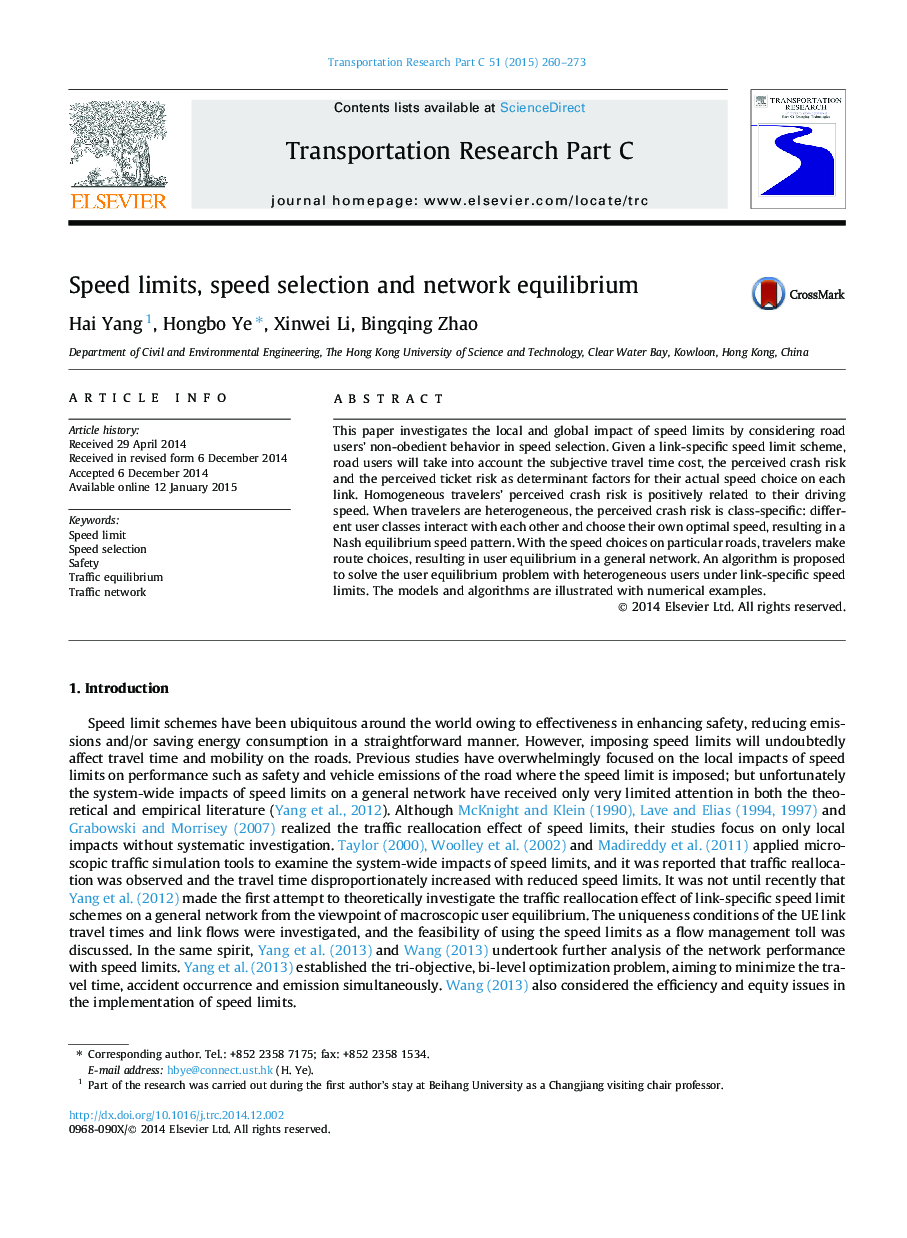| Article ID | Journal | Published Year | Pages | File Type |
|---|---|---|---|---|
| 525002 | Transportation Research Part C: Emerging Technologies | 2015 | 14 Pages |
•Investigate local and global impacts of speed limits with non-obedient travelers.•Travelers trade off crash risk, travel time and ticket risk to choose optimal speed.•Crash risk is assumed to increase with absolute speed and speed variance on a link.•Speed selection of heterogeneous users on each particular link is a Nash equilibrium.•Propose a Gauss–Seidel-type algorithm to solve for the multiclass user equilibrium.
This paper investigates the local and global impact of speed limits by considering road users’ non-obedient behavior in speed selection. Given a link-specific speed limit scheme, road users will take into account the subjective travel time cost, the perceived crash risk and the perceived ticket risk as determinant factors for their actual speed choice on each link. Homogeneous travelers’ perceived crash risk is positively related to their driving speed. When travelers are heterogeneous, the perceived crash risk is class-specific: different user classes interact with each other and choose their own optimal speed, resulting in a Nash equilibrium speed pattern. With the speed choices on particular roads, travelers make route choices, resulting in user equilibrium in a general network. An algorithm is proposed to solve the user equilibrium problem with heterogeneous users under link-specific speed limits. The models and algorithms are illustrated with numerical examples.
